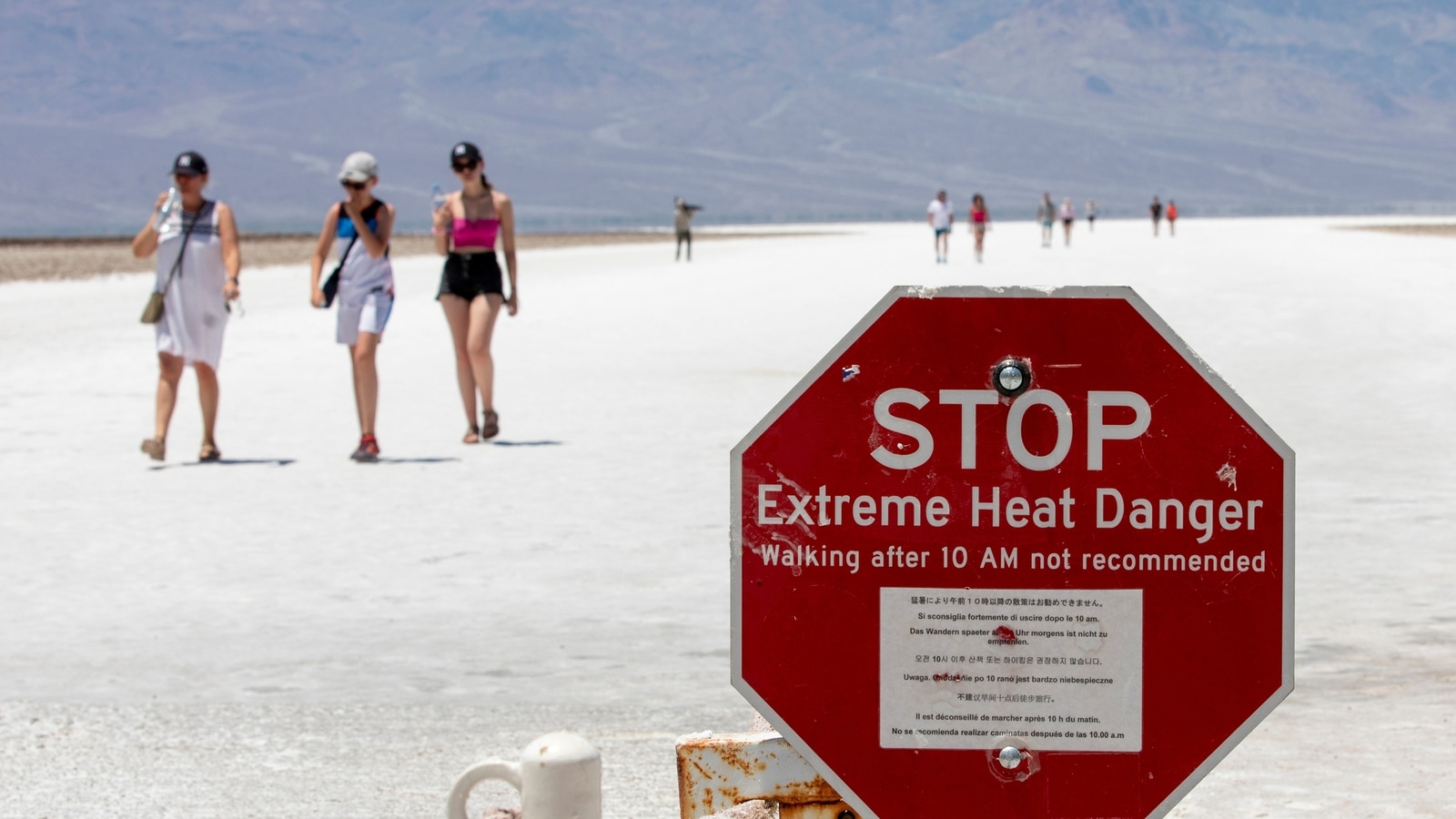Tourists defy US heatwave warnings to capture Death Valley’s unique landscape | Travel

Hundreds of Europeans traveling the American West and adventurers from across the US are still drawn to Death Valley National Park, even though the desolate region, considered one of the hottest places on earth, is being hit by a dangerous heatwave blamed for the death of a motorcyclist over the weekend.
French, Spanish, English and Swiss tourists stepped out of their air-conditioned rental cars this week to snap photos of the barren landscape, so different from the snow-capped mountains and rolling green hills they know from home. American adventurers liked the novelty, even as park officials in California warned visitors to be cautious.
“I was excited that it was going to be so hot,” said Drew Belt, a resident of Tupelo, Mississippi, who planned to stop in Death Valley, the lowest elevation in the United States, on his way to climb Mount Whitney in California. “This is a once-in-a-lifetime opportunity. Kind of like walking on Mars.”
The scorching heat wave sweeping much of the United States also brought record temperatures in Oregon, where it is believed to have caused six deaths, the coroner’s office said on Tuesday. More than 161 million people in the United States, mostly in the western states, were affected by heat warnings.
Dozens of locations across the West and Pacific Northwest reached or broke previous heat records over the weekend, and those numbers are expected to continue this week.
In Death Valley National Park, tourists line up to take photos in front of a giant thermometer that the National Park Service places near the visitor center. It’s not very accurate, showing temperatures 1 to 5 degrees Fahrenheit higher than more modern National Weather Service instruments nearby, making it a more impressive photo reading.
“It’s not called an official temperature sensor,” said Dan Berc, a warning coordination meteorologist with the National Weather Service in Las Vegas.
“This is an incredibly popular place, as you can see from the visitors behind me,” said senior park ranger Jeanette Jurado on Tuesday at the thermometer that read 48.9 degrees. “But even in winter, people think 80 degrees in December is unusual and worth a photo.”
A heat warning was also issued for large parts of Washington and Oregon on Tuesday. Temperatures could reach 110 degrees Fahrenheit in some areas, posing a high risk for heat-related illness, the National Weather Service said. Temperatures of over 100 degrees Fahrenheit were expected in parts of Idaho, including Boise, on Tuesday.
The U.S. heat wave came as global temperatures hit a record high in June for the 13th month in a row, marking the 12th month in a row that it was 1.5 degrees Celsius warmer than pre-industrial times, according to Europe’s Copernicus climate service. Most of that heat, trapped by human-caused climate change, comes from long-term warming from greenhouse gases released when coal, oil and natural gas are burned, scientists say.
In the scorching desert of Eastern California, high temperatures of 53.3 degrees Celsius were recorded in Death Valley National Park over the weekend. A visitor, whose identity is unknown, died of the heat on Saturday. Another person was hospitalized.
They were among six motorcyclists who rode through the Badwater Basin area in sweltering heat, the park said in a statement. The other four were treated at the scene. Rescue helicopters were unable to respond because the aircraft generally cannot fly safely in temperatures above 120 degrees Fahrenheit (48.8 degrees Celsius), officials said.
Death Valley is considered one of the most extreme environments in the world. The highest temperature ever officially recorded on Earth was 56.67 °C in July 1913 in Death Valley, although some experts dispute this measurement and say the true record is 54.4 °C measured in July 2021.
“It’s impressive,” said Thomas Mrzliek of Basel, Switzerland, of the triple-digit heat. “It’s like a wave hitting you when you get out of the car, but it’s a very dry heat. So it’s not like Europe.”
Across the Nevada desert, temperatures in Las Vegas had already reached 39.4 °C (103 °F) by 9:30 a.m. Tuesday, and temperatures were expected to rise again to 48.8 °C (120 °F) by the end of the day.
“The intense heat wave will continue to break records through the end of the week before easing as increasing monsoon moisture returns to the region,” the National Weather Service in Las Vegas said.
In Arizona, average temperatures in Phoenix and Yuma during the first eight days of July were the highest on record, the National Weather Service in Phoenix said. It said temperatures in both cities would be about 10 degrees above normal over the next few days, with highs mostly between 112 F (44.4 °C) and 120 F (48.8 °C).
Extreme heat and a prolonged drought in the West have also dried out vegetation, fueling wildfires.
In California, firefighters were battling at least 18 wildfires on Tuesday, including a 42-square-mile blaze in the mountains of Santa Barbara County. The Lake Fire was only 12 percent contained, and forecasters warned of a “volatile combination” of high heat, low humidity and northwest winds developing throughout the day.
North of Los Angeles, the 2-square-mile Vista Fire ripped through trees in the San Bernardino National Forest, sending up a huge plume of smoke that was visible across the region. A small but smoky fire dubbed the Royal Fire burned more than 60 acres of forest west of Lake Tahoe and rained ash on the tourist town of Truckee, California. None of the fires were contained Tuesday.
The National Weather Service said Tuesday that it is extending heat warnings for most of the southwestern United States through Saturday morning.
“The unusually high temperatures are expected to continue through Friday, and then Saturday morning lows could be the warmest of the entire episode as clouds increase,” the service in Reno said. “Thursday could be the hottest day overall in most locations, so it’s not over yet.”
This story has been published from a news agency feed without modifications to the text. Only the headline has been changed.
Get your daily dose of fashion, Taylor Swift, health, festivals, travel, relationships, recipes and all other latest lifestyle news on Hindustan Times website and apps.



